The one good thing about sugar confectionery with regard to the whole sugar debate is that consumers know what they’re getting. Unlike some soft drinks or so-called healthy cereal bars, the sugar in confectionery is not hidden away it’s there right in front of you and to eat it or not is up to the consumer. And eat it they do as, according to Mintel, despite the negative attention attracted by sugar, 42% of consumers said the healthiness of sweets does not concern them, echoing the majority view that it’s fine to eat sugary food as an occasional treat. The research firm found that four in five (79%) people ate sweets last year, the same number as 2014. And women, 16-24-year olds, parents and larger households show above-average consumption.
Mark Roberts, trade marketing manager at Perfetti Van Melle, comments: "Shoppers have always known that there is sugar in confectionery, unlike other products which may have surprising sugar content levels or masquerade as healthier options. Confectionery as an occasional treat is how many consumers enjoy this category and we support this. Perfetti Van Melle is committed to supporting these trends and has many more sharing packs available on the market, so shoppers can graze over a longer period or share with friends, instead of consuming them all in one go."
Roberts says sharing bags are in major growth, driving the category and representing the largest portion of value sales within the market. "According to recent research, sharing at home represents 56% of the occasion market. Stocking an eye-catching range of sharing bags can increase shopper spend and encourage them to buy into the occasion. Fruittella core sharing bags are growing 4.8% in the total market compared to an overall sector increase of 1.2%. We invested over £1.5m in the brand in 2015, and we see the sharing category as a major area for growth in 2016."
At Nestlé, Rowntrees’ entire range of hanging bags has just moved to a sharing pouch format. The company says the change provides benefits to both consumers and retailers. For consumers the sharing pouches are easy to open, they can be resealed using the on-pouch sticker and the bags themselves can stand which makes them easier for sharing. For retailers, the standing bags are designed to generate better on-shelf visibility, hopefully leading to more sales.
The Rowntree’s brand is benefiting from a £5.6m masterbrand campaign showcasing the full range of Fruit Pastilles, Fruit Gums, Randoms, Jelly Tots and Tooty Frooties. This is the highest value media support for Rowntrees since the launch of Randoms in 2009, and features new TV advertising as well as video on demand and digital advertising (including the social media channels Facebook, Instagram and Twitter).
The first burst ran in April and May, with the second burst starting this month and running through to October.
It is estimated the campaign will reach 85% of the UK population, which is 51 million people.
The masterbrand approach was first adopted by Rowntrees last year with the brand’s sponsorship of the 9pm film on Film4. Nestlé says this had positive results in terms of brand equity measures and also uplifts in performance of sub-brands Tooty Frooties and Fruit Gums, which had not had advertising support for over 20 years.
Meanwhile, Mondelez took the masterbrand route earlier this year by joining its Maynards and Bassetts names together, with a total packaging redesign and the launch of Bertie’s Jelly Mix to seal the deal.
The aim was to "reawaken adults’ desire for candy products with a little light-hearted silliness, keeping the iconic characters of each individual product while boosting the range through the strength of the Maynards and Bassetts brands".
At the time of the announcement, Katie Bashford, senior brand manager at Mondelez, said: "Maynards Bassetts will be the number one adult candy brand, worth a huge £127.9m (Kantar/Nielsen data), and, together, will be in an extremely strong position to evolve as a brand and drive category growth."
The newly named range is supported by a £4m campaign, including TV, PR, digital and in-store activity.
Success in a bottle
For the Skittles brand, the launch last year of a bottle format has been a big success. Brand owner Wrigley says ittaps into the growing consumer demand for confectionery products to enjoy on-the-go. The neat red container is designed to stand out on shelf, while with its easy-to-open re-sealable lid it’s great for travellers. Aimia data reveals that so far 22% of sales are incremental to the category.
The Skittles range was further boosted earlier this year with the launch of a Tropical variety containing Orange, Passion Fruit, Tropical Punch, Watermelon and Pineapple flavours.
Haribo too has new flavours via its Starmix and Tangfastics Frenzy Carnival editions. These are a real flavour shake-up. The Starmix packs include a blue banana flavoured bear; a mango flavoured green egg; and a purple, green, lime & mango flavoured ring. The Tangfastics include a lemon & lime flavoured cherry and a grapefruit & pineapple flavoured bottle.
The launch builds upon the success of Starmix and Tangfastics Frenzy Editions, which helped to grow both brands by 10% when they launched for a limited time in 2015 (IRI data).
Alison Satterthwaite, brand manager at Haribo, comments: "Combining limited editions with top sellers presents an exciting sales opportunity for retailers as not only do our most popular treats have huge appeal, but limited editions also drive growth within the category by capitalising upon the products’ popularity."
Sour is still very much a trend in sugar confectionery. Following the successful introduction of Chupa Chups’ Airheads last year, a new Sour variety has been added to the range. Each pack contains bite-sized sweets in five sour flavours: apple, blueberry, cherry, lime and orange.
Mark Roberts says: "The launch forms part of our on-going commitment to continue revising our range to ensure we are supplying our loyal consumers with new products, from a brand and format they already know and love.
"The launch of Airheads marked a real change for Chupa Chups, as we entered the chewy/bagged candy market for the first time. With the new sour variant really packing a punch, we can’t wait to see how the UK market responds to our latest offering."
Roberts says Airheads Sour has already proven to be a success in the US. And, according to IRI data, the launch of Airheads here contributed to the brand experiencing growth of 21.7%, adding £1.7m to the overall sugar confectionery category (IRI data).
Swizzels has extended its Refreshers range to include a tangy Sour Apple flavour. The new chew bar is a vibrant green colour and has a zingy flavour with a fizzy sherbet centre. The company reckons the added ’kick’ of the bar will keep up with consumer demand for sour flavours. In addition, Refreshers Sour Apple is Swizzels’ first countline chew bar that is suitable for vegetarians. The company believes this will open up new markets for the Refreshers range, appealing to new consumers, including those with specific dietary requirements such as a Halal diet.
The Sour Apple chew bar is the latest addition to Swizzels’ successful ’flashback to 10p’ range. It joins Original Lemon and Strawberry Refreshers bar. Refreshers is the top selling chew bar in the market and sales are still growing. Nielsen data shows Original Lemon growing 14% year-on-year and the Strawberry flavour grew 30% in 2015.
Meanwhile, the Drumstick Squashies range has been so successful that Swizzels is adding two new flavours next month: Sour Cherry & Apple and Bubblegum.
Sales director Mark Walker says: "Since launch in 2012, Swizzels’ Squashies range has gone from strength to strength: over 100 million bags have now been sold and the brand has grown by 55% in the past two years (Nielsen/Swizzels data).
"Part of the reason for the success of the Squashies brand is the appeal to consumers of all ages. Squashies appeal to adult shoppers who know and love the original Drumstick and Refreshers flavours from their childhood."
At Ferrero, Tic Tac has gone bananas, bringing back its Minions-themed product, this time with banana flavoured sweets each made to resemble a Minions character. Levi Boorer, customer development director at Ferrero, says: "We know that consumers have a real affinity for both Tic Tac and the Minions franchise so it made complete sense to bring them back, bigger and better than before. It’s great to be able to show the more humorous side of the Tic Tac brand while still being able to offer retailers a way to drive additional sales."
Making a (sugar-free) mint
A Sugar Free Extra Strong variety has been added to the Polo range in single format, rrp 50p. It joins standard Polo Sugar Free which, according to IRI data, is the UK’s number one sugar free mint. Brand owner Nestlé says the launch represents a lucrative opportunity for retailers as sugar free mints are growing in popularity with consumers, with Polo Sugar Free singles up 2.8% and worth £4.6m (IRI). Sales of the new Sugar Free Extra Strong are expected to be incremental to the brand, as consumers demonstrate little crossover between mild and strong mint flavours. What’s more, in consumer testing 80% of extra strong mints and gum consumers had ’strong’ purchase intent with 60% saying they would buy more than three times a week.
Both standard Polo Sugar Free and Sugar Free Extra Strong are accredited by the Oral Health Foundation.
However, Polo now has extra competition as Wrigley’s Doublemint gum has moved into sugar-free mints. Pack formats include a single roll of mints (28g), smaller dual-coloured mints in a bottle (70 pieces) and sharing bags of hardboiled mints (115g, 36 pieces).
Retailer view
Zakhya Begum, Redditch Service Station:
"Haribo are our best-selling sweets, particularly the Starmix and Supermix in the £1 price-marked bags. Skittles also sell very well.
"We haven’t noticed any change in buying patterns people still buy as many sweets as they ever did and they sell all year round.
"Chewing gum flies out the door in boxes, bottles and smaller packs; the bottles are particularly good for in the car."























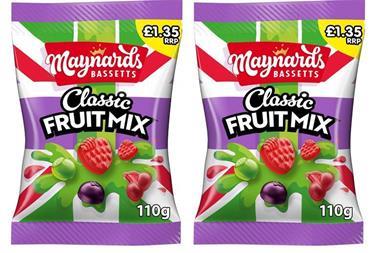
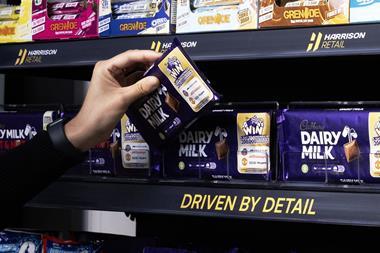

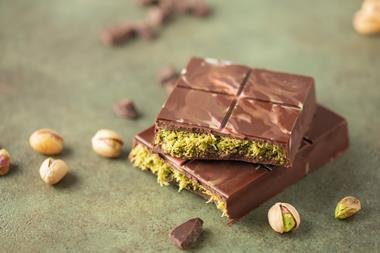
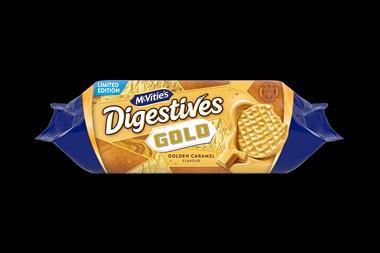

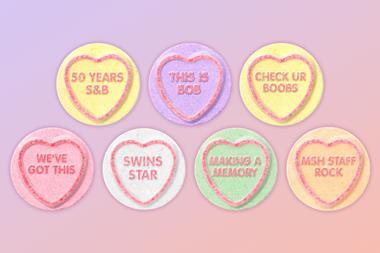
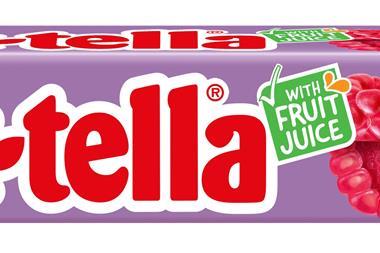
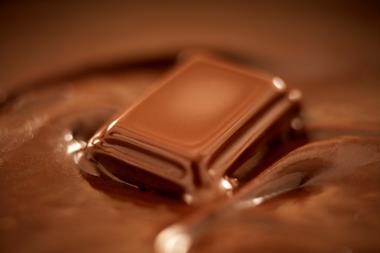
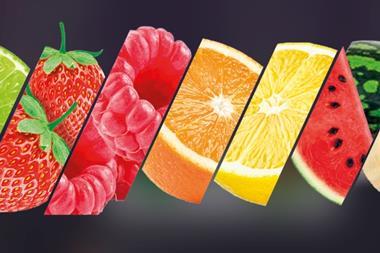
No comments yet